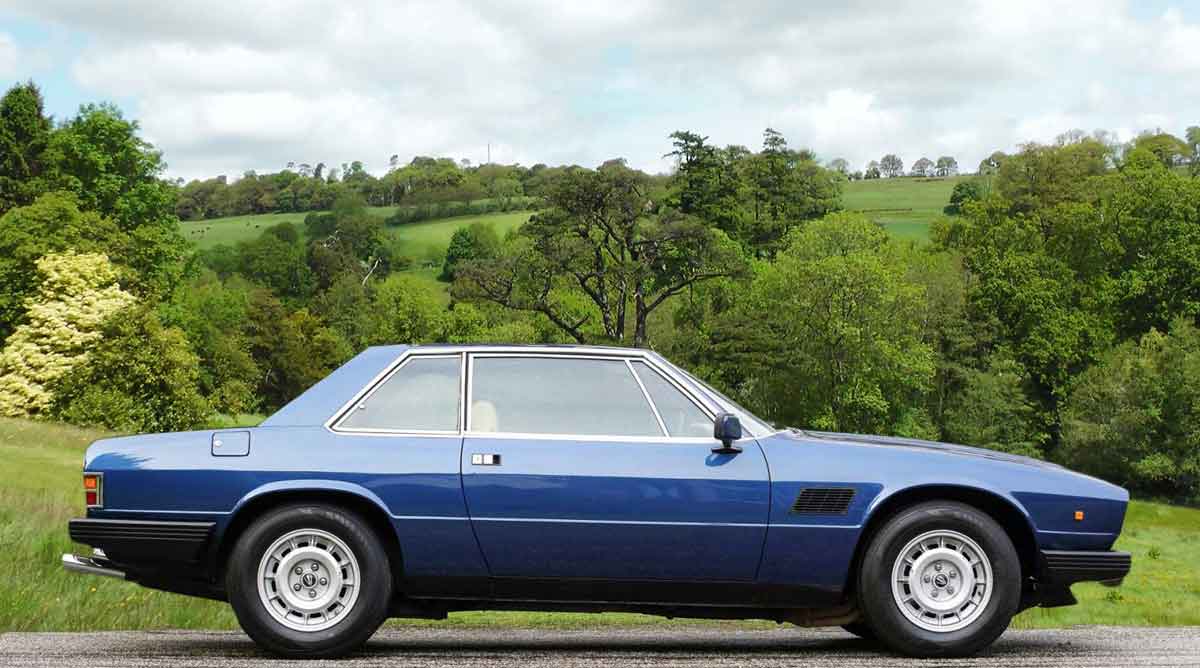
The Maserati Kyalami, named after a South African race circuit where a Maserati powered car won the South African Grand Prix in 1967, was, to be fair, a bit of a dog.
In 1975 De Tomaso had taken over Maserati from Citroen and the financial situation was dire. The world was in the middle of an economic crisis, and petrol prices were at all-time highs. There was very little money in the pot for development but a new flagship car was essential to boost flagging sales.
De Tomaso already produced a car called the Longchamp; this was available as a two-door coupe or a two-door convertible and it was powered by a massive 5.8 litre Ford V8 engine. These came first of all from Ford in America but when they discontinued the engine they were sourced from Australia instead. Hardly surprisingly, fuel consumption was extremely poor so at a time of fuel shortages there was so little interest in the car that at the end of it's production run there were only a couple of them are so manufactured, and it was rumoured that it took a long while to sell off all remaining stock. Nevertheless De Tomaso felt, or at least hoped, that more could be sold if it was made to look more like a Maserati.
Leading Italian car designer Pietro Frua was given the job of adapting the car to make it look much more sporty if possible, without spending a great deal of money. A number of body panels were altered and the American engine was scrapped in favour of a Maserati quad overhead camshaft V8 engine of either 4.2 litre or 4.9 litre capacity.
The new car – if it could be called new – was launched at the 1976 Geneva Motor Show to an almost total lack of interest.
It wasn't as if it was a bad car. Performance was brisk; it could hit 149 mph and go from nought to 60 in 6.4 seconds. With it's choice of five-speed manual or three speed automatic gearbox it offered speed as well as excellent comfort. However at a little over £21,000 it was more expensive than it's main rivals, it still suffered from the disadvantage of having a large engine at a time when they were being shunned by the buying public, and it didn't really look very good; certainly not like a traditional Maserati. As money continued to drain away sales were awful, with only about 200 examples sold altogether. That is perhaps just as well since ownership of the car proved expensive because of reliability issues and a paucity of spare parts, and a high number of sales could have caused considerable damage to Maserati's reputation. That was something that could be left to the Biturbo!